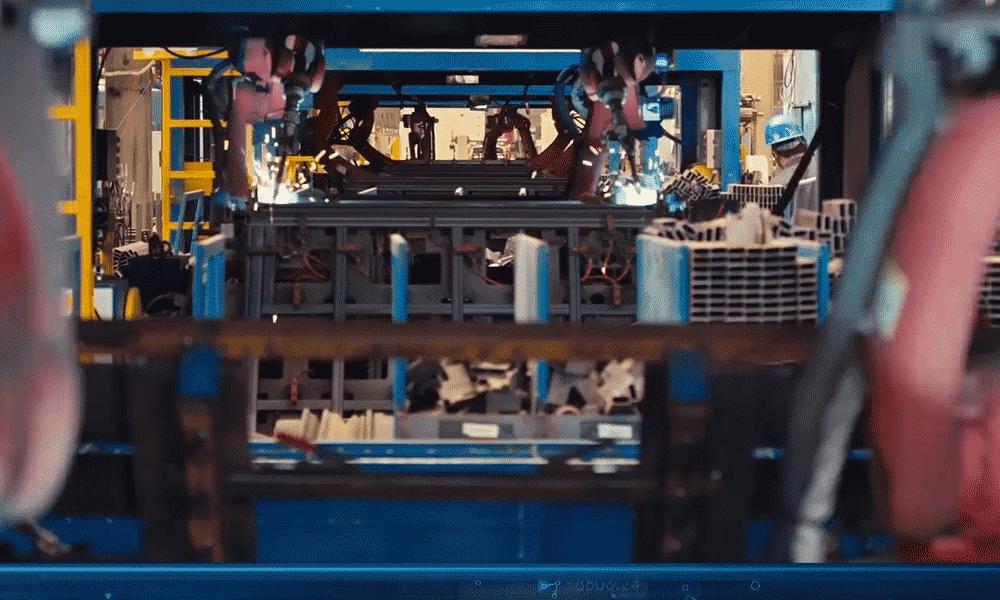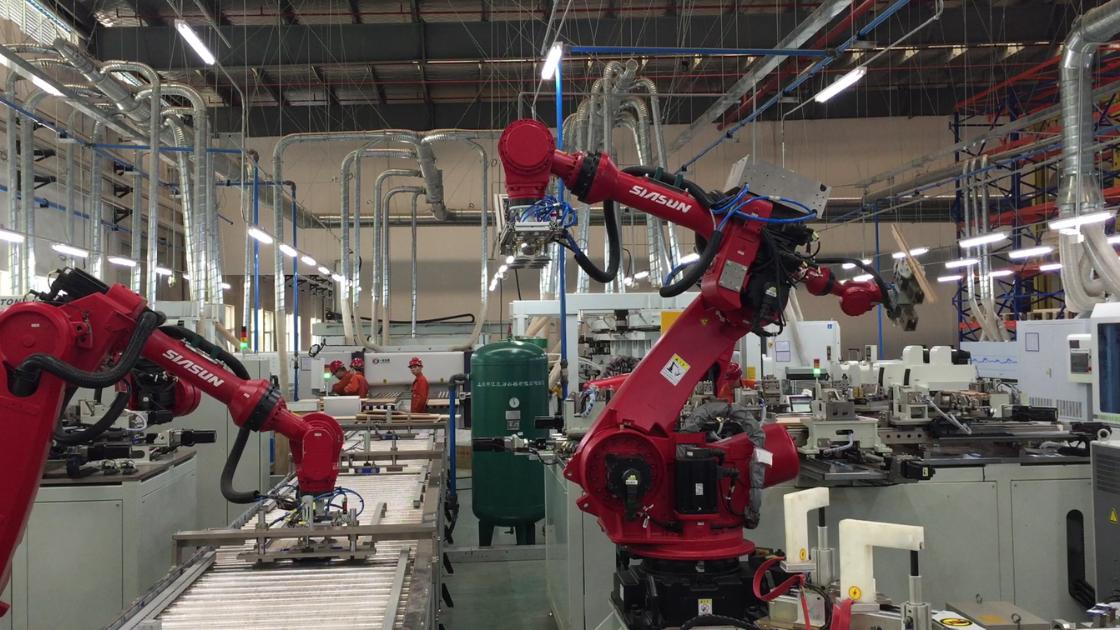TL;DR:
- The welding cell guarantees safety and productivity, with MIG/MAG, TIG technologies.
- Equipment includes smoke extraction systems and protective panels.
- Robotised welding stations reduce downtime.
- Protective clothing required: coveralls, gloves, automatic masks.
- Fire protection and ventilation systems are key.
- Modern technologies such as MIG/MAG, TIG improve the quality of welds.
- Automation increases accuracy, requires training.
- Ergonomics reduce the risk of injury, affect comfort and quality.
- Monitoring working conditions improves safety and production.
- Digital technologies enable precise welding planning.
Did you know that the welding cell is the basis for safety and efficiency in production? It is not just a workplace, but the heart of modern welding processes. For any operations manager in manufacturing, the cell is the key to maximising results. In this article, I will describe how this technology is changing the way we look at welding. I invite you to discover why you should invest in this solution!
Is a welding cell crucial to the safe and effective work of a welder?
In the work of a welder, the welding cell plays a key role in ensuring safety and productivity. What is a robot welding cell? It is a specialised workstation equipped with technologies, such as MIG/MAG or TIG, which enable the automation of the welding process. This minimises the risk of errors and increases precision.
The importance of the welding cell in the welder's work
The welding cell has not only a protective function, but also a supportive one. With the right equipment, such as fume extraction systems and protective panels, exposure to harmful agents is reduced. This, in turn, translates into greater comfort for the welder, which has a direct impact on the quality of the welds made.
Welding cell equipment and its impact on efficiency
Basic cell equipment, which includes welding robots and protective panels, allows production processes to be optimised. One of the solutions is robotised welding station, which can be configured with one or two work zones to enable continuous operation and reduced downtime.
History and development of welding cell design
Initially, the welding cell was a simple design with basic protective equipment. However, developments in welding technology and process automation have led to more advanced solutions that now offer greater flexibility and efficiency. This is why the welding cell has become indispensable in any modern production line where precision and speed of work are important.

What equipment is essential for safety in a welding cell?
Safety in the welding cell is a priority that must not be forgotten. A key element is the right protective equipment for welders, which must be adapted to the specific working conditions. Choosing the right protective clothing is fundamental - special overalls, gloves and boots are indispensable in protecting against heat and sparks.
Welding masks
One of the most important pieces of equipment is the welding mask. The question of which welding mask is best for an amateur requires a precise answer. For beginner welders, I recommend automatic adjustable masks. Because they automatically adjust to the brightness, these masks provide optimum eye protection, which is extremely important for those who are just starting out in welding.
Protective clothing
Equally important is the protective clothing for welders, which must meet the appropriate standards to effectively protect the body from hot spatter and radiation. The materials used to make welding clothes are specially designed so that they do not easily ignite or burn out.
Fire protection and ventilation systems
Nor can we forget fire and ventilation systems as key elements of a welding cell. A correctly designed ventilation system ensures that harmful fumes and pollutants are removed from the environment, which is not only required by regulations but crucial for the health of welders. Fire suppression systems are another layer of protection against workplace fires, indispensable in any welding cell.
All these elements are absolutely essential to ensure safe and efficient working conditions in the welding cell.
How are modern technologies affecting work in the welding cell?
Modern technology in the welding cell is a real revolution that is changing the way we view welding. When I think about the question: What is a welding seam?, I must emphasise that it is a linear material connection formed by melting or plastic transformation of a metal. The role of modern welding methods such as the use of a welding robot is crucial here, as they significantly affect the quality and precision of such joints.
Welding robot applications: advantages and challenges
There are many benefits to introducing robots into welding work. Welding automation increases accuracy and productivity while reducing the risk of human error. However, the implementation of the technology requires adequate training so that operators know how to use them to their full potential. In my experience, knowledge of new technologies such as welding robots, is becoming increasingly essential.
Welding technologies such as MIG/MAG and TIG have already become standard in many applications. The weld produced by these methods is characterised by high aesthetics and durability. The use of such innovations allows for increased productivity and reduced production costs, which is crucial for companies that wish to remain competitive.
The impact of digital technology on the quality and precision of welds
Digital technologies, including design and simulation software, are playing an increasingly important role in welding. They make it possible to precisely plan the welding of even the most complex components. This is what enables us to create the highest quality joints that meet the strict requirements of the industrial sectors. In this context, automation is not only the future, but already the present of welding. Robotised workstations The welding machines that we build from A to Z in our company are a perfect example of this.
What factors influence the organisation and efficiency of work in a welding cell?
Workplace ergonomics are crucial to the productivity and health of the welder. A well-planned workplace avoids injuries, increases comfort and affects the quality of welding. Equipment should be set up so that the welder has easy access to all tools, minimising time spent on unnecessary handling.
Work ergonomics and its impact on welder's productivity and health
Ergonomics in welding work is not only about comfortable chairs or tables, but also the right height for tools and a place to rest. With such solutions, the welder reduces the risk of back or wrist pain. Over time, good workstation positioning translates into higher weld quality and fewer re-workings, which benefits both the welder and production.
Smoke extraction systems: a must for health and the environment
A welding fume extraction system is a key piece of equipment for any welding cell. The fumes that are generated during welding can be harmful to health. It is therefore imperative that they are effectively removed, which protects the health of the operator and improves the air quality in the factory. Modern systems are quiet, energy-efficient and highly effective.
Monitoring of working conditions as a tool for quality and safety management
Monitoring the working conditions in the welding cell avoids hazardous situations and ensures production quality. Regular inspections and assessment of the condition of the machines ensure that potential problems are quickly identified and resolved. This not only improves safety, but also allows production processes to be optimised, which is crucial for production efficiency and sustainability.
Summary
The welding cell is the heart of safe and efficient welding work. Equipping it with the right equipment significantly improves productivity and safety. The history of welding cells shows how much they have changed over the years. Modern technologies such as automation and welding robots are revolutionising the process, offering new opportunities and challenges. Space organisation and safety systems, such as fume extraction, are essential for the health of workers. An investment in a good welding cell is an investment in the future of manufacturing.

